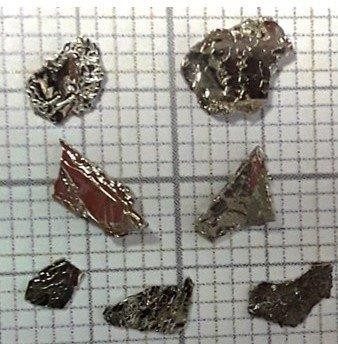FOR IMMEDIATE RELEASE | April 02, 2019
New alternatives may ease demand for scarce rare-earth permanent magnets
Note to journalists: Please report that this research will be presented at a meeting of the American Chemical Society.
A press conference on this topic will be held Tuesday, April 2, at 1 p.m. Eastern time in the Orange County Convention Center. Reporters may check-in at the press center, Room W231B, or watch live on YouTube http://bit.ly/ACSLive_Orlando2019 ("ACSLive_Orlando2019" is case sensitive). To ask questions online, sign in with a Google account.
ORLANDO, Fla., April 2, 2019 — From computer hard discs and smart phones to earbuds and electric motors, magnets are at the forefront of today’s technology. Magnets containing rare-earth elements are among the most powerful available, allowing many everyday objects to be ever smaller. But rare-earth elements can be difficult to obtain, given either their scarcity or the challenging geopolitical climates of some of the nations where they are mined. Now, scientists have identified magnets based on more readily obtainable rare earths, as well as some promising magnets that don’t contain these materials at all.
The researchers will present their findings today at the American Chemical Society (ACS) Spring 2019 National Meeting & Exposition. ACS, the world’s largest scientific society, is holding the meeting here through Thursday. It features nearly 13,000 presentations on a wide range of science topics.
“We have developed new ways to better predict which materials make good magnets,” says Thomas Lograsso, Ph.D., who led the team. “Experimentally, we can ‘rehabilitate’ near-magnet systems, called paramagnets. We start with alloys or compounds that have all the right properties to be ferromagnetic at room temperature. Many times, these materials have high proportions of iron or cobalt.”
Paramagnets are materials that are weakly attracted to a magnetic field and are not permanently magnetized. But by adding alloys, paramagnets have been transformed into ferromagnets, or regular permanent magnets, like the metal surface of a refrigerator. Lograsso’s team at the Critical Materials Institute at Ames Laboratory has identified two promising candidates thus far using this “rehabilitative” approach, and both are forms of cerium cobalt: CeCo3 and CeCo5. Although cerium is called a rare-earth element, it is very abundant and easy to obtain.
Previous work on CeCo3 showed that it exhibited classic paramagnetic behavior. Calculations predicted that by adding magnesium, paramagnetic CeCo3 could be transformed into a ferromagnet. These predictions have been experimentally validated, Lograsso says, and this property has been observed in measurements of single crystals of the compound.
CeCo5 is a strong ferromagnet. The researchers combined theoretical calculations with high-throughput experiments to zero in on the exact amount of copper and iron to add that would optimize the compound’s ferromagnetism. With these additives, the team anticipates that CeCo5 could someday be used in place of the strongest rare-earth magnets that contain neodymium (Nd) and dysprosium (Dy), thus easing demand for those critical elements. Lograsso and colleagues continue to investigate other similar metals that can be added to CeCo5 to further improve its suitability as a viable substitute for Nd and Dy magnets.
“Replacing rare-earth magnets, which are in high demand, would be ideal, both economically and environmentally,” Lograsso says. “Although our modified cerium-cobalt compounds are not as powerful as rare-earth magnets, they could still be highly valuable for certain commercial applications. So, our goal is to match the right magnet material to a specific application — a so-called ‘Goldilocks’ non-rare-earth magnet.”
To that end, the group continues to use their strategy to optimize the key characteristics of poor magnets or non-magnets to transform them into alternatives that are completely free of rare-earth elements. For example, they are now using cobalt to optimize the performance of iron germanium, Fe3Ge. The resulting compound’s high magnetization is comparable with the best Nd-based magnets. This strategy is not just limited to Fe3Ge and is being applied to other promising rare-earth-free compounds to selectively improve magnet properties.
The researchers acknowledge support and funding from the U.S. Department of Energy.
The American Chemical Society, the world’s largest scientific society, is a not-for-profit organization chartered by the U.S. Congress. ACS is a global leader in providing access to chemistry-related information and research through its multiple databases, peer-reviewed journals and scientific conferences. ACS does not conduct research, but publishes and publicizes peer-reviewed scientific studies. Its main offices are in Washington, D.C., and Columbus, Ohio.
Media Contact
ACS Newsroom
newsroom@acs.org
View Larger Image






